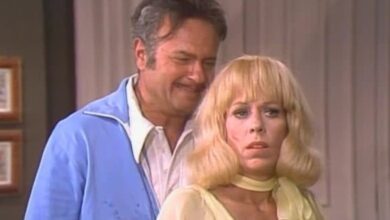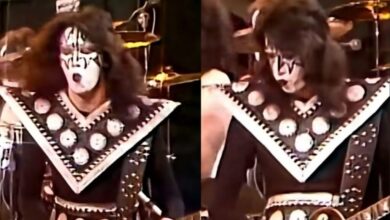The Righteous Brothers’ “You’ve Lost That Lovin’ Feelin’” Redefined Pop Ballads and Captured the Spirit of 1964
In 1964, a song emerged that would fundamentally reshape the way pop ballads were recorded, produced, and received. With its haunting orchestration, pleading vocals, and emotional weight, it delivered a level of drama rarely heard on the radio at the time. Released at the dawn of the British Invasion, it managed not only to survive the fierce competition of the era—it transcended it. By early 1965, the song had reached No. 1 on both the U.S. Billboard Hot 100 and the UK Singles Chart, becoming a transatlantic sensation. Its slow build, emotional complexity, and cinematic production introduced audiences to a new kind of musical experience—one where heartbreak sounded larger than life.
The duo behind the recording, Bill Medley and Bobby Hatfield, had already made waves as The Righteous Brothers. Hailing from Orange County, California, they brought a blue-eyed soul sound that mixed gospel fervor with rock and roll swagger. While they weren’t brothers by blood, their vocal chemistry gave them an uncanny synchronicity. Medley’s deep baritone and Hatfield’s soaring tenor created a vocal interplay unlike anything else in pop music. The group had released a few hits before, but nothing on the scale or emotional depth of what was to come.
The genesis of this enduring anthem came from the songwriting powerhouse of Barry Mann, Cynthia Weil, and producer Phil Spector. Inspired by the emotional rawness of earlier soul records, the writing team crafted a lament about love slipping away—a concept universally understood but rarely delivered with such theatrical intensity. The song’s unusual structure defied the traditional verse-chorus formula, building slowly in tension until it exploded into a plea of desperation. According to legend, when Spector first heard the demo, he declared it would become “the greatest record ever.” He wasn’t far off.
Spector, known for his “Wall of Sound” technique, took full control of the recording process. With a massive ensemble of session musicians, including members of the famed Wrecking Crew, he layered strings, percussion, piano, and echoing backing vocals to create a vast, echoing atmosphere. Bill Medley’s mournful lead vocal opens the track with deep, nearly spoken lines, grounding the song in masculine vulnerability. When Hatfield enters later, his voice lifts the song into the stratosphere, pleading with near-religious intensity. It was a masterclass in vocal arrangement and emotional pacing.
Upon release, the song wasn’t just a hit—it was a phenomenon. It spent two weeks at the top of the Billboard charts and mirrored that success in the UK, where it displaced some of the biggest British acts of the era. Critics praised its ambition and pathos. DJs reportedly broke format to play it more often, and fans were captivated by how different it sounded from anything else on the airwaves. Its success was all the more notable given its length—over three minutes at a time when radio stations preferred shorter tracks. In fact, Spector infamously lied about its runtime on the label to ensure it would be played.
Culturally, the song marked a turning point in how love and loss were portrayed in music. It gave a masculine voice to emotional vulnerability, paving the way for other male artists to explore themes of fragility without sacrificing strength. It also elevated the role of the producer in pop music—Spector was no longer just behind the scenes; he was the architect of the song’s sonic identity. The record wasn’t merely a performance; it was an atmosphere, a feeling, a moment suspended in sound.
For The Righteous Brothers, the song launched them into a new echelon of stardom. It opened doors for television appearances, European tours, and future collaborations with other top-tier songwriters and producers. It also defined the sound that would become synonymous with their name—heart-wrenching, vocally rich ballads with a gospel undertone. Their follow-up hits, such as “(You’re My) Soul and Inspiration” and “Unchained Melody,” further cemented their reputation, but it was this breakthrough that gave them artistic credibility.
Its impact wasn’t limited to The Righteous Brothers. The song influenced countless artists and producers who sought to replicate its emotional grandeur. Bruce Springsteen, Tom Jones, and Elvis Presley would all cite the track as influential in their approach to ballads. In the years that followed, songs with similarly slow builds and emotional arcs became more common across pop, soul, and even rock genres. It arguably opened the door for artists like Eric Carmen, Barry White, and even modern-day crooners like Adele to thrive.
Cover versions of the song appeared almost immediately, with artists as varied as Dionne Warwick, Roberta Flack & Donny Hathaway, and Hall & Oates offering their interpretations. Yet none could quite match the original’s dramatic gravity. In 1980, Hall & Oates included their version on their album Voices, which brought the song to a new generation and briefly returned it to radio prominence. Even still, the original stood firm as the definitive version.
At the time of its release, America was undergoing rapid social and cultural change. The British Invasion was in full force, civil rights tensions were high, and pop culture was beginning to reflect deeper emotional currents. In that context, this song’s raw desperation and sonic ambition resonated profoundly with listeners. For The Righteous Brothers, it meant securing their place not only in pop history but in the emotional consciousness of a generation.
Its legacy is virtually unmatched. In 1999, BMI declared it the most-played song on American radio and television of the 20th century, with over eight million airplays. That figure would eventually exceed 15 million. In 2015, the song was inducted into the National Recording Registry by the Library of Congress, recognized for its cultural, historical, and artistic significance. Rolling Stone consistently ranks it among the greatest songs of all time.
It also helped reshape how ballads were approached in the studio, ushering in an era where emotional range and atmospheric production were as essential as melody. Spector’s Wall of Sound would go on to influence producers like Brian Wilson of the Beach Boys and George Martin of The Beatles, while Medley and Hatfield’s performances set a new standard for vocal duos.
The song’s stature only grew over time. It has appeared in dozens of films, commercials, and television shows—from Top Gun to Ghost—each time rekindling its emotional power for new audiences. Even decades after its release, it continues to reduce listeners to silence and bring them to tears.
Ultimately, this song isn’t just a love ballad—it’s an emotional reckoning. It remains a benchmark for how music can be both grand and intimate, theatrical and deeply personal. For The Righteous Brothers, it was the defining moment of their career. For the music industry, it was a seismic shift. And for listeners, it remains one of the most unforgettable expressions of heartbreak ever committed to tape.





